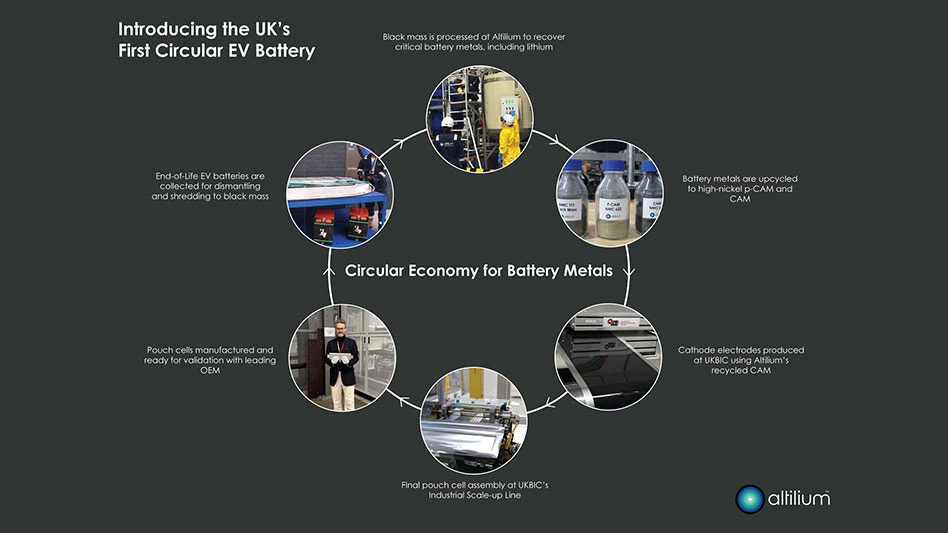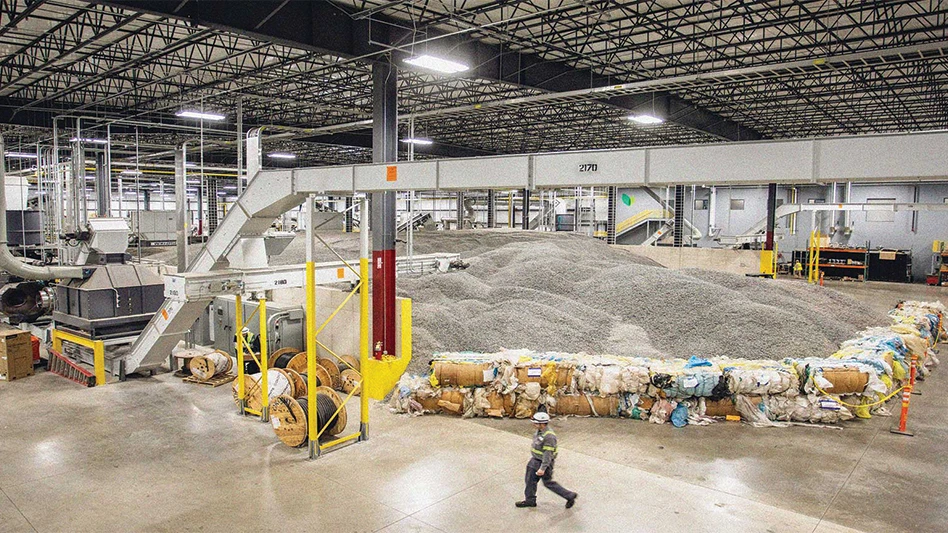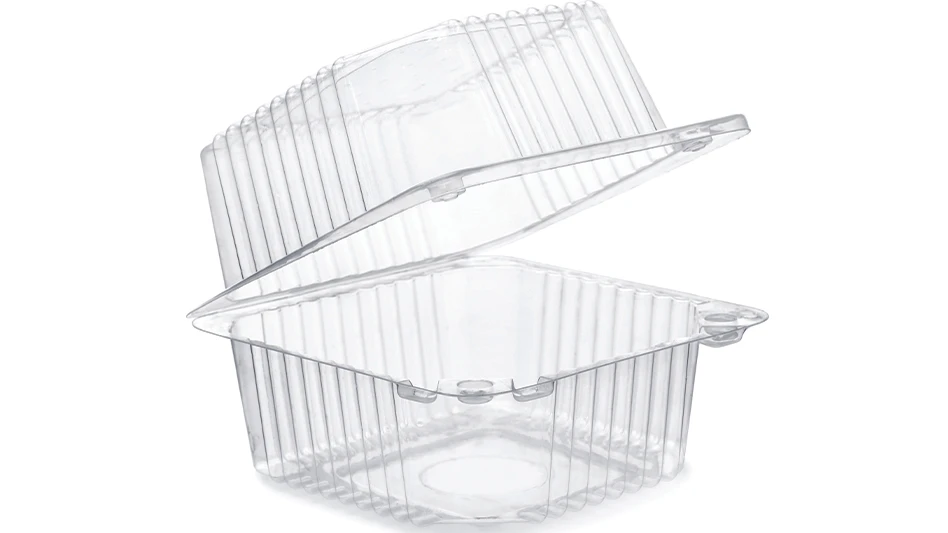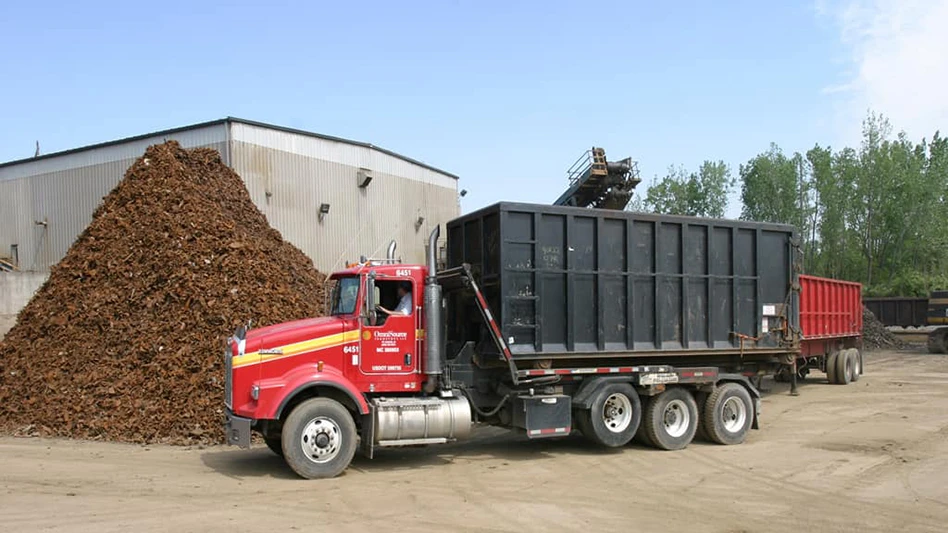Appliance recycling is one of the more well developed of the
recycling segments. White goods, such as refrigerators, washers, dryers, hot water tanks, stoves and air conditioners, are being recycled at a rate of nearly 90 percent.
Because of the high percentage of metal in most major appliances, the scrap recycling infrastructure to capture these goods is largely in place. With higher scrap prices, particularly within the past year, appliance recycling has regained the attention of scrap peddlers.
Some critics might contend, though, that an ongoing issue concerns regulations governing the disposal of hazardous components. Although many of these regulations have been in effect for more than a decade, compliance with these requirements is still sometimes lacking. Despite these concerns, appliance recycling has forged ahead as a thriving industry.
THREE-WAY STREET
Recyclable appliances come from a variety of sources, which fall into three major categories. Bill Heenan, president of the Steel Recycling Institute, Pittsburgh, says municipalities generate about 20 percent, appliance retailers about 40 percent, and peddlers generate about 40 percent of this stream.
The peddler segment can include either individual operators or waste haulers who separate appliances at a landfill drop-off point.
"Scrap steel prices are $150 to $200 per ton now, compared to $100 to $120 about 18 months ago. With the prices of scrap rising, there are more and more peddlers," Heenan says. "Almost 90 percent of appliances are recycled today." But, he says, "The most difficult part is the last 10 percent."
At the time of delivery, about 95 percent of appliance retailers will take back the old appliances for recycling, Wayne Morris, vice president of division services of the Association of Home Appliance Manufacturers (AHAM), Washington, says. "Appliance recycling is economically driven at the program level and local level by the price of scrap. It doesn’t require anything [legislatively] to be done," he says.
One of the nation’s leading appliance recyclers is Appliance Recycling Centers of America Inc. (ARCA), Minneapolis. President and CEO Jack Cameron says that appliance recyclers take advantage of the extensive infrastructure that exists in the appliance and scrap industries.
He says that while higher scrap prices are generating a brisk flow of appliances, other factors are putting the existing equation at risk. The cost of fuel, wages and insurance have all increased, which reduces the profitability of taking back old appliances. Additionally, the network of used appliance dealers may be shrinking because lower-cost, new appliances are reducing the customer base for used machines.
"New [appliance] dealers are the biggest generators of recyclable appliances," says Cameron. "Retailers such as Sears maintain holding space in their warehouses. However, it is the used appliance industry that subsidizes recycling. It used to be that 20 percent to 25 percent of discarded appliances were resalable; now it is 10 percent to 15 percent. Used appliance dealers are now more selective in what they will fix," he says.
Because the price of new appliances is decreasing, the profit margin from operating used appliance businesses is shrinking. Says Cameron, "We will start to see charges to pick up used appliances. What is slowly emerging is appliance recycling that is not [affiliated with] used appliances."
ARCA also works with wholesalers near the Mexican border who sell units to Mexico and the Caribbean islands. Locations closer to the Mexican market rely more on resale; otherwise ARCA relies on recycling, Cameron says.
BALANCING COSTS
Appliance Disposal Inc., Pittsburgh, collects most of its appliances from large merchants. It picks up its remaining 5 percent of appliances (which often contain freon) directly from homes or at curbside.
Fred Landay, owner, says that with appliances containing freon that cannot be resold, Appliance Disposal extracts the freon with the help of a licensed technician. The company then loads the old appliances onto a truck that is bound for a shredder. It handles about 7,000 pounds per truckload and three or four truckloads per day. "Pittsburgh is good market located near mini-mills, which means low transportation costs," Landay says.
Like Appliance Disposal, ARCA also drains refrigerants and removes capacitors before shredding. Says Cameron, "We remove the mercury switch as well as PCBs. There were a lot of issues involving PCB capacitors prior to a federal law being enacted in 1991. There is a $25,000 fine per incident for violation." He worries, though, that "no one is enforcing it."
Landay wishes there was more enforcement and policing of refrigerators and air conditioners that go to the shredders. Many collectors "cut the lines in the back and don’t evacuate them," he says.
Appliance recyclers receive their goods from a number of sources. At City Scrap and Salvage Co., Akron, Ohio, about 50 percent of the recyclable appliances come from scrap peddlers, Vice President Randy Katz says. About 25 percent come from municipalities. Another 15 percent come from appliance stores, and the remaining 10 percent come from repair shops or services that clear out residential basements and garages.
Katz says that the high price of scrap means that municipalities are not bringing in as many appliances. "In fact, we used to pick up from municipalities on a weekly basis, but now it is monthly due to lower volume. The reason is that peddlers are picking them up first. In the past, peddlers may have charged to pick them up, but now there is no charge," he says.
City Scrap & Salvage divides its appliances that contain freon (such as refrigerators, freezers and air conditioners) into a separate group, which it transports to a certified specialist who drains the freon and sends the appliances back to City Scrap. For appliances that do not contain freon, City Scrap weighs the appliance and removes the capacitors. It then sends the appliances through a shredder.
A magnet picks up the steel, and the nonferrous metals move through an eddy current. Both are sent to consuming mills. Fluff—the remaining insulation, plastic and other non-marketable material—is sent to a landfill. "The biggest change is that beginning in April the landfills increased their fluff disposal fees," says Katz. This county fee, which increased from $2.75 per ton to $5 per ton, is assessed to cover a local landfill that has closed. City Scrap monitors the shredded fluff quarterly for traces of hazardous chemicals.
VIEW FROM TOWN HALL
Some municipalities are also experiencing growth in appliance recycling. King County, Wash., primarily serves the suburbs and rural areas outside Seattle. Its Solid Waste Division operates eight transfer stations.
A few years ago it began to provide appliance recycling collection directly at some of its stations, to make such recycling more convenient for the public. It now accepts appliances for a flat fee of $10 per non-CFC and $25 per CFC appliance at two of its suburban stations and two rural stations.
Tom Watson, Solid Waste Division manager, says, "At our busy Bow Lake Transfer Station, we collected a total of 5,100 appliances in 2003. But in just the first nine months of 2004, we have already collected 4,700 appliances at Bow Lake."
King County collected 12,900 appliances total in 2003 and 11,300 in the first nine months of 2004.
"As scrap prices have gone up, you might expect our numbers to go down," Watson says. "Someone could get rid of a stove for free to a scrap dealer, for example, or even get paid a little bit instead of having to pay $10 to us. My sense is that convenience is more important to our residents than the fees."
One program in particular is generating more appliances for recycling. In King County, a local power utility has a major program called WashWise, which gives rebates to people who buy energy- and water-efficient washers. Watson says this may result in people buying new washers sooner than they would have otherwise, and they then need to recycle their old one.
Fairfax County, Va., collects recyclables from 43,000 of 360,000 homes. (The rest of the service is provided by private haulers.) Appliances are brought to one of two county facilities. The county removes the freon and PCBs and charges $1 per appliance. It delivers the obsolete appliances to its local scrap recycler.
In Fairfax County, the growth of home building and remodeling is leading to growth in recyclable appliances. Pamela Gratton, recycling manager, says that in 1999, 591 white goods were collected. In 2004, the number is 1,613.
Appliance recycling continues to grow as marketing efforts and the demand for steel scrap increase. Offering a variety of feasible disposal options to businesses and residents promotes the flow of appliances through the recycling stream.
The author is a freelance contributor based in Washington, D.C. He can be contacted at mailto:acoia@lycos.com
Get curated news on YOUR industry.
Enter your email to receive our newsletters.
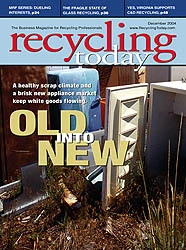
Explore the December 2004 Issue
Check out more from this issue and find your next story to read.
Latest from Recycling Today
- Returpack reports increased DRS activity in Sweden
- Trade groups align against European export restrictions
- Construction, auto sectors show mixed signals
- Politics in Turkey threaten recycled steel outlet
- Toppoint Holdings expands chassis fleet
- Lego creates miniature tire recycling market
- Lux Research webinar examines chemical recycling timetables
- Plastics producer tracks pulse of wire recycling market

